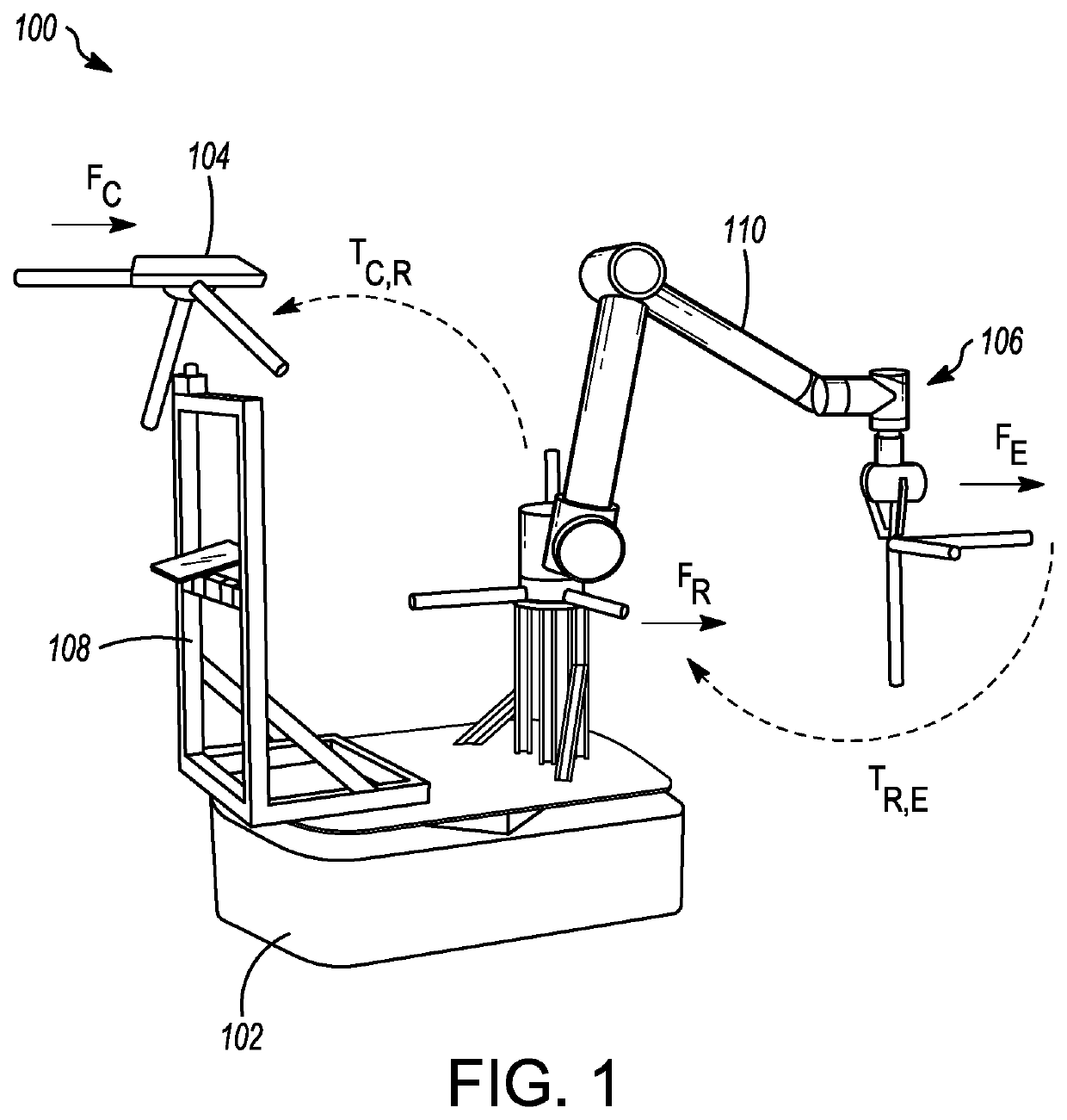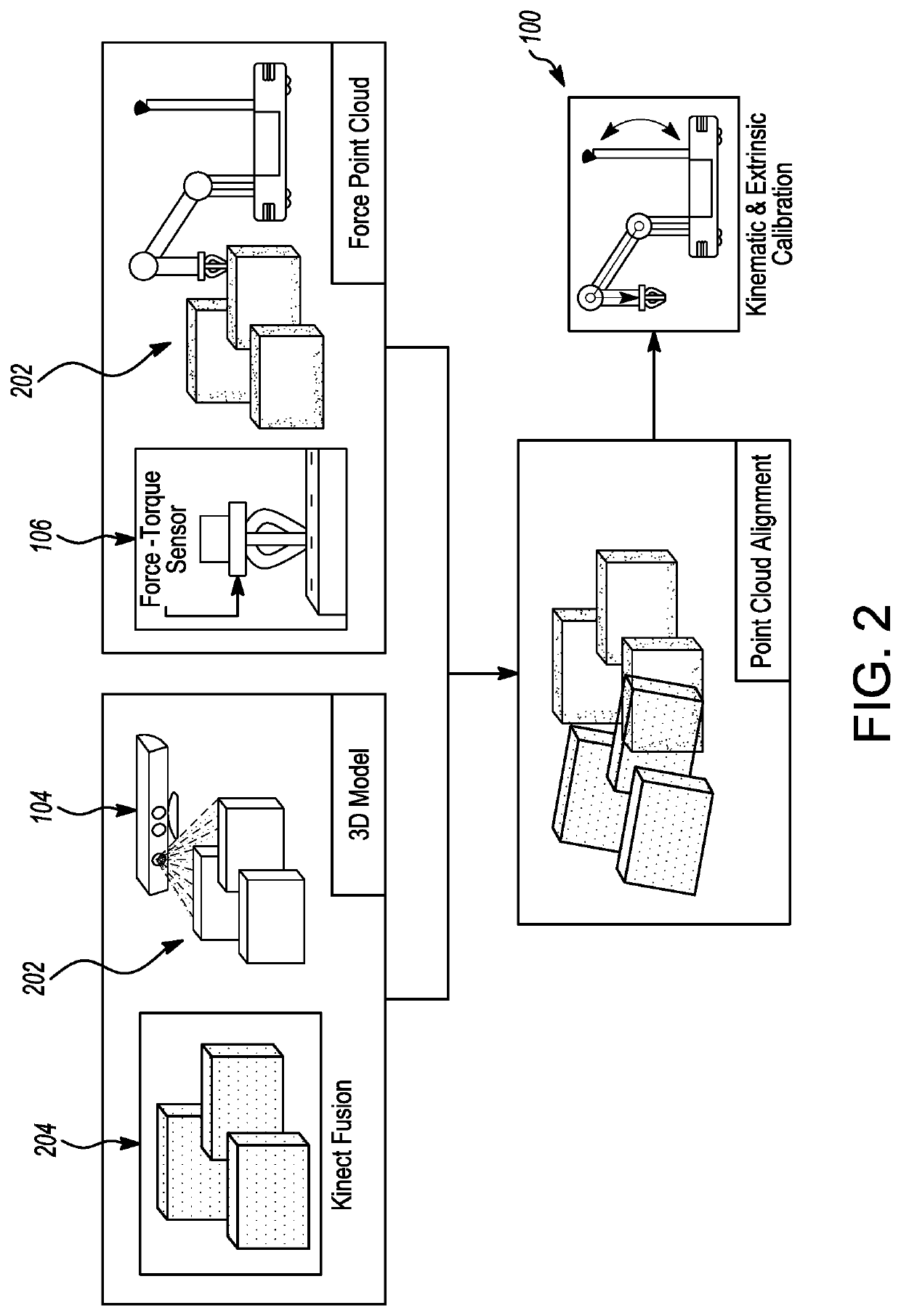Method of calibrating a mobile manipulator
a mobile manipulator and mobile technology, applied in the field of robot manipulators, can solve the problems of high cost, unsafe robot manipulators, and tedious manual calibration upon installation
- Summary
- Abstract
- Description
- Claims
- Application Information
AI Technical Summary
Benefits of technology
Problems solved by technology
Method used
Image
Examples
Embodiment Construction
[0039]The present disclosure relates to a method of automatic, in-situ calibration of a (an optionally mobile) manipulator end-effector to an externally-mounted depth sensor, using only the on-board hardware.
[0040]The following description illustrates principles, which may be applied in various ways to provide many different alternative embodiments. This description is not meant to limit the inventive concepts in the appended claims. The principles, structures, elements, techniques, and methods disclosed herein may be adapted for use in other situations where calibration of relative position and orientation of a sensor mounted on a system to an end-effector of the mobile system is desired, wherein the position of the sensor is unaffected by the movement of the end-effector. The system may be mobile or stationary.
[0041]While exemplary embodiments of the present technology have been shown and described in detail below, it will be clear to the person skilled in the art that changes, an...
PUM
 Login to View More
Login to View More Abstract
Description
Claims
Application Information
 Login to View More
Login to View More - R&D
- Intellectual Property
- Life Sciences
- Materials
- Tech Scout
- Unparalleled Data Quality
- Higher Quality Content
- 60% Fewer Hallucinations
Browse by: Latest US Patents, China's latest patents, Technical Efficacy Thesaurus, Application Domain, Technology Topic, Popular Technical Reports.
© 2025 PatSnap. All rights reserved.Legal|Privacy policy|Modern Slavery Act Transparency Statement|Sitemap|About US| Contact US: help@patsnap.com



